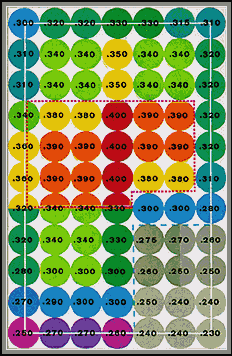Berkshire 1997 Shareholder Letter - Cliff's Notes Version

This is the twenty-first in a series of blog posts that will analyze / summarize Warren Buffett's shareholder letters from 1977-2015. For all of the prior shareholder letters, see here.
The 1997 letter weighs in at 11,800 words, a modest 1.7% increase from 11,600 words the prior year. Berkshire's gain in net worth during 1997 was $8.0 billion, or 34% of beginning 1996 net worth.
BUFFETT EARNED 60% ANNUAL RETURNS IN THE 1950s
One side note at the outset. Buffett offhandedly mentions in the 1997 letter that his "annual results in the 1950s were better by nearly thirty percentage points than my annual gains in any subsequent decade". What he doesn't mention is that during his partnership years overall, or from 1957-1969, his fund had a gross return in excess of 30% per annum, with the largest gains coming during the decade of the 1960s. Therefore we can logically conclude that Buffett earned approximately 60% annual returns investing his own money during the 1950s. This probably explains his remarks in recent years that if he were investing small sums today, he could earn returns of over 50% [see here, for example].
THERE ARE NO CALLED STRIKES IN INVESTING
Buffett summarizes his patient and concentrated approach to investing by analogizing to a baseball hitter waiting for a perfect pitch to hit...
We try to exert a Ted Williams kind of discipline. In his book The Science of Hitting, Ted explains that he carved the strike zone into 77 cells, each the size of a baseball. Swinging only at balls in his "best" cell, he knew, would allow him to bat .400; reaching for balls in his "worst" spot, the low outside corner of the strike zone, would reduce him to .230. In other words, waiting for the fat pitch would mean a trip to the Hall of Fame; swinging indiscriminately would mean a ticket to the minors.
If they are in the strike zone at all, the business "pitches" we now see are just catching the lower outside corner. If we swing, we will be locked into low returns. But if we let all of today's balls go by, there can be no assurance that the next ones we see will be more to our liking. Perhaps the attractive prices of the past were the aberrations, not the full prices of today. Unlike Ted, we can't be called out if we resist three pitches that are barely in the strike zone; nevertheless, just standing there, day after day, with my bat on my shoulder is not my idea of fun.
Below we have reproduced Ted Williams' chart of the strike zone [source]...

Williams explains his hitting approach as follows...
What I had more of wasn’t eyesight, it was discipline, and isn’t it funny? I took so many “close” pitches I wound up third in all-time bases-loaded home runs, among the top five in all-time home runs, in the top three in runs batted in per time at bat, and I drove in more than a fifth of the Red Sox’ runs in my twenty years in Boston. I averaged .344 for a career. I had a higher percentage of game-winning home runs than Ruth, I was second only to Ruth in slugging and percentage combined; I was walked more frequently than Ruth and struck out less—once every eleven times up to Ruth’s one in six. I had to be doing something right, and for my money the principal something was being selective. I have said that a good hitter can hit a pitch that is over the plate three times better than a great hitter with a questionable ball in a tough spot. Pitchers still make enough mistakes to give you some in your happy zone. But the greatest hitter living can’t hit bad balls good. Sure, you get occasional base hits on pitches in the gray areas; Yogi Berra and Joe Medwick were so-called “bad ball” hitters, usually on high or inside pitches. A high ball can sometimes be a good ball to hit if it’s close to that area you hit well in. But more often than not, you hit a bad pitch in a tough spot and nothing happens. And when you start fishing for the pitch that’s an inch off the plate, the pitcher—if he’s smart—will put the next one two inches off. Then three. And before you know it you’re making fifty outs a year on pitches you never should have swung at. [emphasis added]
In investing, thousands of pitches are thrown every day, most of which will be outside the investing "strike zone". Thus, the investor must be disciplined enough to avoid swinging at bad pitches and instead wait for the pitch that is clearly in his or her "happy zone", as Williams refers to it. Once that pitch is identified, it is incumbent on the investor to swing mightily and not to attempt a bunt. After all, to our knowledge nobody has ever bunted the ball over the fence for a homerun.
CONCLUSION
For the record, in 1997 Berkshire's stock was up 35%, outperforming the S&P 500 by 1.5%, the Marlins beat the Indians in the World Series in seven games, the Broncos edged the Packers 31-24 in Super Bowl XXXII and on August 31st Lady Di, Princess of Wales, perished in a car accident. Next up, 1998, the Year of Lewinsky.





